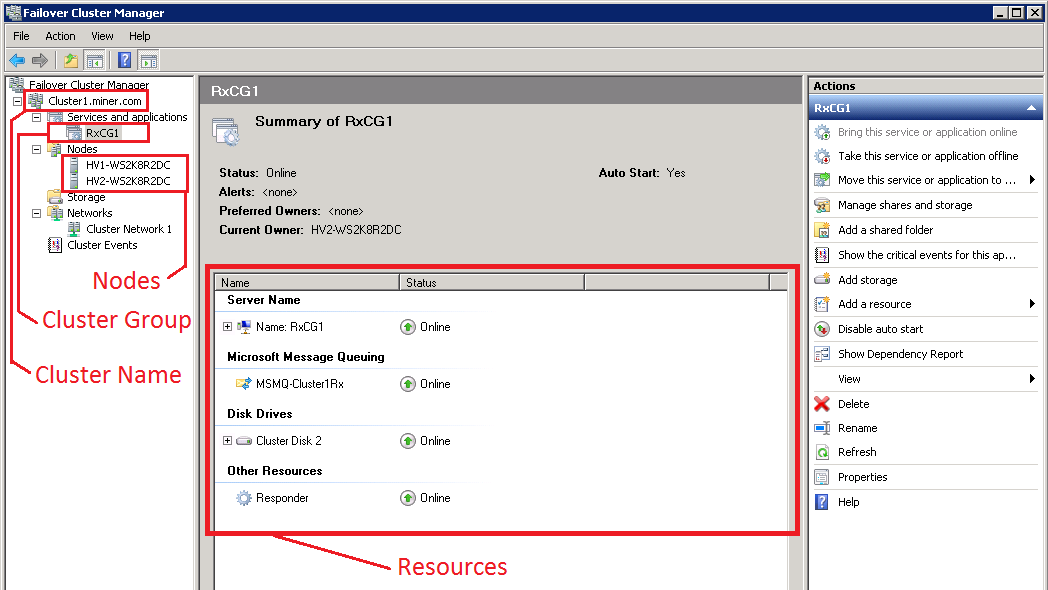

Version: 10.2.1c and 10.2.1c SP3 |
| Responder Overview > Optional Functionality > Clustering Server 2008 R2 |
 |
The Windows Clustering examples are provided as one option to take advantage of clustering. Depending on your utility's technology environment, there may be other options more suitable for your implementation. Contact Schneider Electric to discuss available options and to help you decide which technology makes the most sense for your utility. |
Server clustering is not a required part of the Responder implementation. If you choose to implement it, server clustering will provide failover support for the Responder services and message queues. If one Responder server should fail, its workload is shifted to another server in the cluster without impacting Responder users.
The Responder server is installed as a virtual server. This allows the Responder services to failover to a different server should the physical server fail.
 |
In order for this to work properly, it is critical that all servers in the cluster be configured identically, with Failover Cluster Manager installed on each one. In addition, your cluster must have available unused storage in order to cluster. |
In order to permit scaling-out, Responder uses a component called a Message Router to route messages from the client facing queues to the back-end Responder services (e.g., Data Services, Prediction Services). The image below shows the Message Router component in a group (to allow for failover) forwarding messages to additional server machines that participate as active nodes in an active/active server cluster. If an active node (in the responder business services cluster) fails-over then its resources will transfer to another node. (Only two nodes are shown in the active/active cluster, but Windows Server 2008 R2 supports up to sixteen nodes. This may vary for different OS versions.)
 |
Query Services should not participate in the cluster. Running Query Services as a generic Windows Service resource under the cluster service is neither supported nor tested. Query Services were not designed to run as a cluster resource in Microsoft Cluster Server. However, the Query Services (Windows Service) can be installed and run on the cluster nodes (server machines). To provide high availability, Query Services can be run on multiple nodes as Responder services and client applications already support the ability to choose among the available Query Service instances as well as handle when a new Query Service is brought online or becomes unavailable. To have Query Services installed and running on the cluster node in this way, you must remove its dependency on the Responder Windows Service. |
These are the terms used in this documentation.
Cluster: A cluster is a group of two or more servers working together to provide applications or services to clients. A cluster provides failover support should a server in the cluster fail. Responder can use a cluster to provide failover support for the Responder services (i.e., Data Services, Archive Services, Prediction Services). A cluster may also be referred to as a server cluster.
Cluster Group: Each virtual server in the cluster is represented by a cluster group. When failover occurs, the entire group will failover.Resource: Each cluster group consists of resources that indicate information such as physical address, IP address, message queuing and network name.
Node: A node represents a physical server in the server cluster. The names of your nodes can correspond with the names of the servers they represent.

 |
The process for implementing server clustering can vary significantly depending on your system and requirements. Please ensure that your IT support representative has adequate knowledge of clustering and that your nodes are clustered correctly prior to configuring the servers for Responder. |
If you choose to use Server Clustering the following requirements are specific to Responder.
Failover Cluster Manager
MSMQ
ArcFM or ArcFM Viewer
Responder
Configure your Responder server and Message Router using the following instructions.